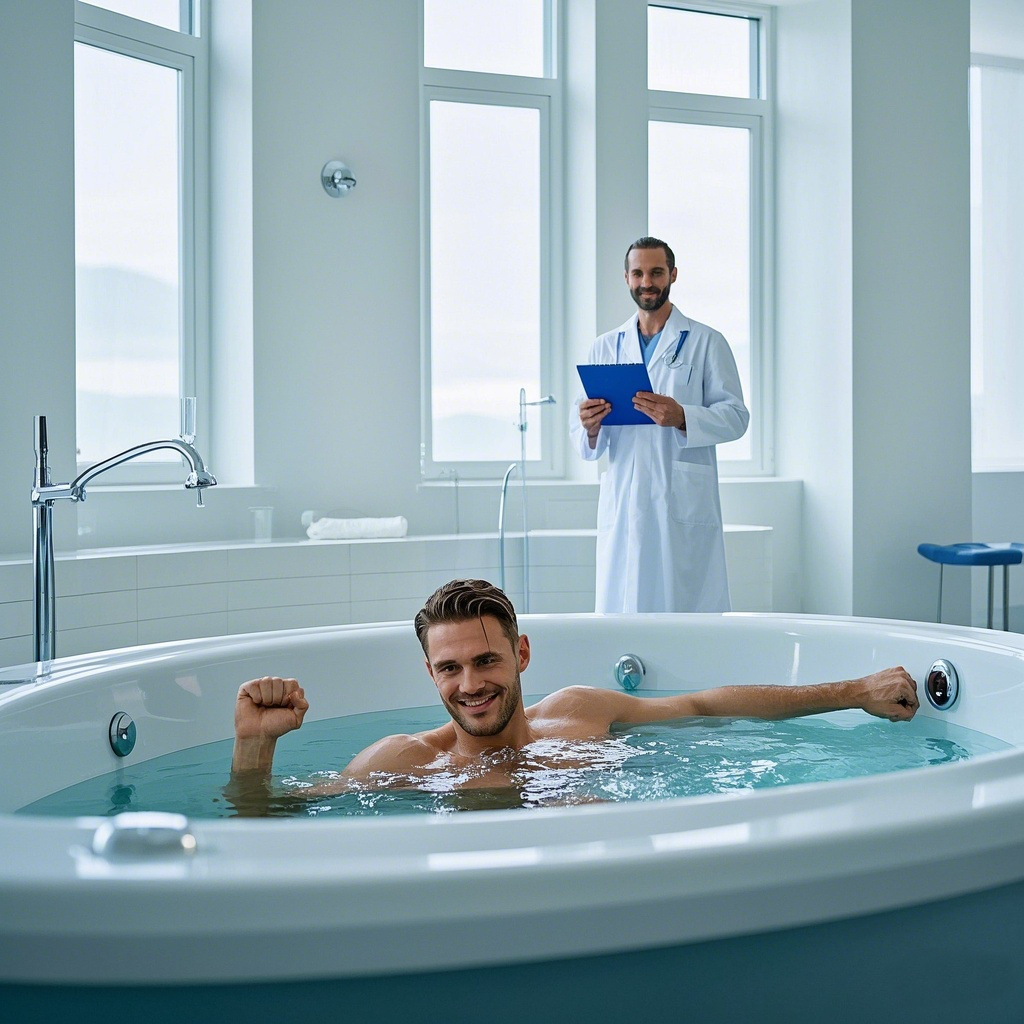
Recent studies have revealed numerous health benefits of cold water exposure. Not only does it enhance mood, improve physical strength, and boost metabolism, but it is also deeply linked to autophagy, a powerful cellular repair process. How does cold exposure trigger autophagy, and what benefits does this bring to our overall health? Let's explore the science behind it.
Cold Water Baths and Cellular Regeneration
A study conducted at the University of Ottawa involved 10 healthy male participants, averaging 23 years of age, all with regular exercise habits. These volunteers were asked to submerge themselves in water at 14°C for 60 minutes each day over the course of seven days. Blood samples were taken before and after the cold plunge on Days 1, 4, and 7 and exposed to various temperatures (37°C, 35°C, 33°C, 31°C, and 4°C) to analyze changes.

The findings revealed the following:
Autophagy Activation: Key autophagy markers, LC3-II, and the LC3-II/LC3-I ratio showed a significant increase by Day 4 and Day 7, especially at temperatures below 35°C.

The colder the water, the more pronounced the autophagic response.

Additionally, the protein pULK1 also saw a substantial rise, confirming that cold exposure enhances autophagy.

Reduction in Apoptosis: Levels of cleaved-caspase-3, a marker for cell death, were elevated on Day 1 and Day 4 but steadily decreased, returning to baseline by Day 7.

This suggests that autophagy not only reduces apoptosis but also improves the body’s cold tolerance.

Lowered Inflammation: Inflammatory markers such as TNF-α and IL-6 decreased progressively throughout the cold exposure period, with the most notable reductions at lower temperatures. This highlights how cold exposure can regulate immune responses and help reduce chronic inflammation.

Additional Health Benefits of Cold Water Immersion
Beyond boosting autophagy, cold water baths offer a range of other health benefits for the nervous, immune, and mental systems.
Neuroprotection: Research indicates that cold exposure may help alleviate symptoms of autoimmune encephalomyelitis (EAE) by reducing the expression of MHCII molecules on immune cells. This, in turn, decreases T-cell activation and neuroinflammation, providing protection for the nervous system.

Stimulating Nerve Regeneration: In a separate animal study, cold exposure significantly increased the expression of the cold shock protein RBM3, which promotes synaptic repair and regeneration, providing relief from neurodegenerative conditions.

Enhanced Cognitive Function and Focus: Short bursts of cold exposure have been shown to elevate norepinephrine levels in the brain, which boosts alertness, cognitive function, and focus, contributing to better mental clarity and mood.

How to Safely Practice Cold Adaptation
While cold therapy can be highly beneficial, it’s important to approach it in a gradual and controlled manner. Here are some effective methods for incorporating cold exposure into your daily routine:
Progressive Cold Water Immersion: Begin with warm water (around 37°C), then slowly lower the temperature to below 30°C. Start with 1-2 minutes of immersion and gradually increase to 5-10 minutes, allowing your body to adapt without overwhelming it.
Contrast Showers: Alternate between hot and cold water for 30 seconds each, repeating for 3-5 cycles. This boosts circulation, enhances vascular flexibility, and activates autophagy.
Cold Water After Exercise: After a workout, taking a cold plunge or shower can significantly reduce muscle inflammation and accelerate recovery, particularly for athletes and fitness enthusiasts.

Breathing Techniques with Cold Exposure: Combining deep breathing exercises (like those in the Wim Hof Method) with cold exposure can improve your cold tolerance and mental resilience.
The Ice Bath Chiller: A Superior Way to Experience Cold Therapy
For a more controlled and efficient approach to cold therapy, a smart ice bath chiller is an excellent option. Unlike traditional ice-filled baths, these cold plunge chiller offer precise temperature control, reliable performance, and advanced features, making them ideal for both enthusiasts and professional settings.
Benefits of Using a Cold Water Chiller for Therapy:
Precise Temperature Control: These devices allow you to set the water temperature between 5°C and 15°C, providing a consistent, stable experience and avoiding the stress caused by fluctuating temperatures.

Comfort and Safety: Cold baths with constant temperatures are gentler on the body, making them easier for beginners to handle. Many models also come equipped with UV sterilization and timing features for added safety.
Efficiency: With no need for manually adding ice, these chillers save time and effort, making them perfect for high-frequency use in gyms, therapy centers, or home setups.
Usage Guidelines:
Ideal Water Temperature: 10°C-15°C (start with 15°C for beginners)
Cold Bath Duration: 10-15 minutes
Frequency: 3-5 sessions per week, depending on individual needs
Who Should Use Cold Therapy?
Athletes seeking muscle recovery after intense exercise
Individuals looking to stimulate autophagy and boost their immune function
Those with sedentary lifestyles who wish to improve mental clarity and energy
Professionals in rehabilitation or cold therapy training
Note: Individuals with heart conditions, pregnant women, or anyone with specific medical conditions should consult a healthcare provider before engaging in cold therapy.
Cold Adaptation: A Tool for Building Resilience
As the temperature starts to rise, now is the perfect time to embrace cold water baths. Cold exposure puts the body under mild stress, which can help trigger its repair mechanisms and potential. As the saying goes: “What doesn’t kill you, makes you stronger.”

With the right approach, cold plunges can be more than just a test of willpower—they are a powerful tool for recovery and enhancing your health.
